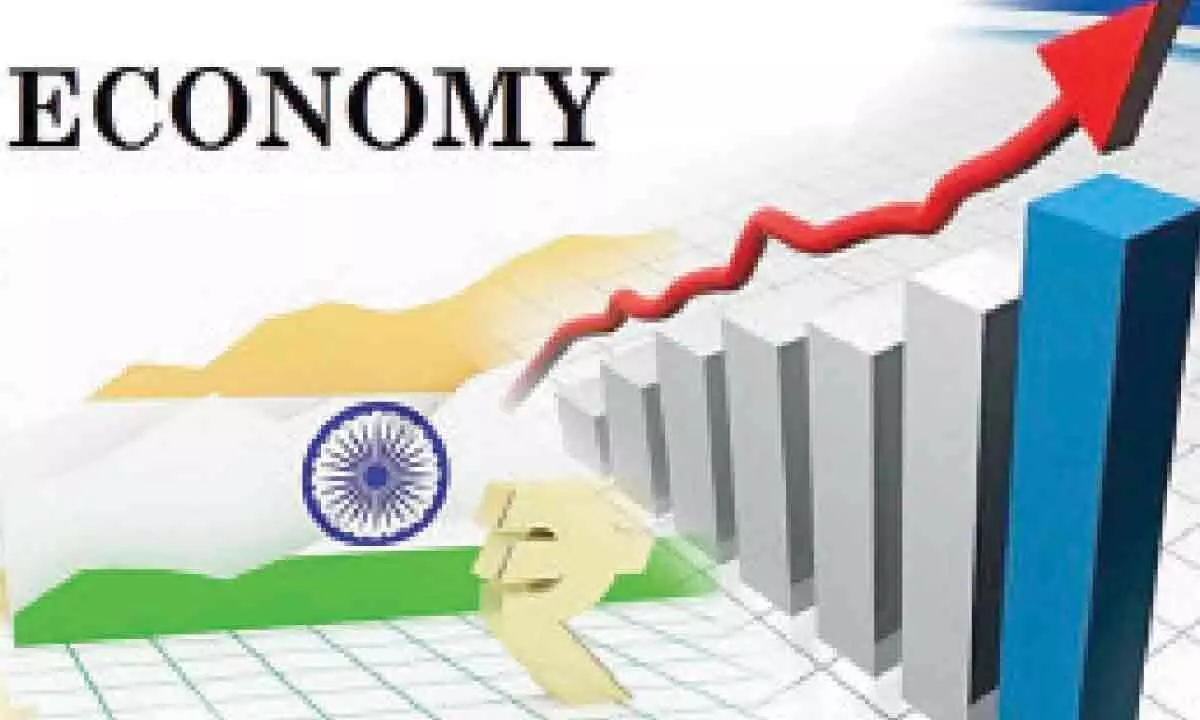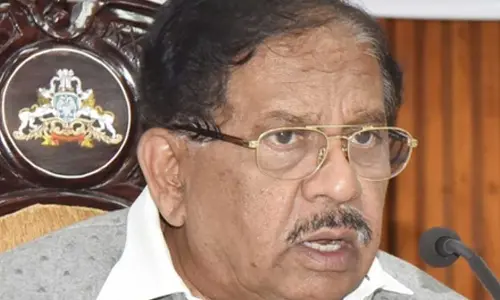Indian economy’s resilience and the road up ahead

More development and urbanization will create new opportunities for investments and jobs
The Indian economy continues to be robust. According to Fitch Ratings, our economy will be among the world’s fastest-growing countries with a growth of 6.5 per cent in 2024-25, while in the current fiscal, the pace of gross domestic product (GDP) growth will be 6.9 per cent.
The Reserve Bank of India (RBI) has also raised its GDP growth forecast for 2023-24 by 50 basis points to seven per cent. The International Monetary Fund (IMF) too has projected the growth at 6.3 per cent for the current fiscal, while Goldman Sachs Research has projected the country’s growth rate to be the highest – 6.2 per cent – among 13 large economies in 2024. According to S&P, India’s GDP will grow 6-7.1 per cent annually during 2024-2026. Since objective academic views are a rarity in a highly polarized political ecosystem, one cannot expect our esteemed economists not to be a divided lot. Many experts do not even show much fascination for GDP figures as they find a huge mismatch between them and the ground realities. It is, however, an accepted fact that India is currently the world’s fifth-largest economy. We have ambitious projections for the future and by the year 2047, we aspire to be a $ 30 trillion economy.
An equally important observation with regards to the country’s economy came from the IMF recently where it projected the general government debt exceeding 100 per cent of India’s GDP by 2027-28. The Union Finance ministry said that several other countries are expected to perform worse than India on the debt front. For instance, the corresponding figures in the ‘worst-case’ scenarios for the USA, UK and China are about 160, 140, and 200 per cent, respectively, which is far worse as compared to India’s 100 per cent, the ministry said, adding that “any interpretation that the report implies that general government debt would exceed 100 per cent of GDP in the medium term is misconstrued.”
The ministry and its team of economists and other experts are certainly better placed to look into the pros and cons of what the IMF said but for a developing country like ours with a vast share of people depending upon government welfare programmes for their survival and multiple infra and quality gaps in many critical areas such as health and education sectors, the general debt exceeding beyond the GDP is not a healthy sign but certainly not a cause of serious concern given the persistent buoyancy in the country’s economy. At the same time, the Centre is determined to achieve its stated fiscal consolidation target to reduce the fiscal deficit below 4.5 per cent of GDP by FY 2025-26.
As we aspire to be a developed nation by 2047, we need to make concerted efforts to enhance people’s per capita income in a sustainable manner and ensure they have enough savings to spend on accessing quality health and education facilities. According to Trading Economics global macro model, GDP per capita in Germany is expected to reach $ 42946 by the end of 2023, around $ 43075 in 2024 and $ 43592 in 2025. GDP per capita in Singapore is expected to reach $ 67831 by the end of 2023. In the long-term, Singapore GDP per capita is projected to trend around $ 69527 in 2024 and $ 71196 in 2025. GDP per capita in South Korea was last recorded at 33644.65 US dollars in 2022. The GDP per capita in South Korea is equivalent to 266 per cent of the world’s average. In a densely populated country like China, he GDP per capita is expected to reach $ 12081 by the end of 2023, while in Malaysia it is expected to reach $ 11850. India’s GDP per capita is currently estimated to be $ 2,612.45. The country’s per capita net national income at current prices for 2022-23 stands at Rs. 172,000, according to estimates from the National Statistical Office (NSO). This marks an almost 100 per cent increase from per capita income in 2014-15 – Rs. 86,647.
In 2019, India’s GDP per capita, which measures the average income earned per person in a country during a given year, was $2,104. However, in 2020, this figure dropped to $1,876, placing the country one spot below Bangladesh, which currently has a GDP per capita of $1,887. Unlike India, Bangladesh has experienced consistent economic growth over the past three years.
Now the question is how to increase our GDP per capita? Economists and experts suggest multiple ways and myriad means.
However, the powers-that-be need to focus on increasing the income of small and marginal farmers. In India, the major chunk of population works in agriculture and small-scale farming supports many poverty-level communities. When farmers are prospering, they support other sectors of the country’s economy through their own consumption. Similarly, there is a need for constant increase in infra spending to create gainful opportunities for the people along with total metamorphosis of rural landscape in terms of facilities, opportunities and privileges.
Efforts should also be made to significantly improve connectivity between rural habitats and urban towns and cities. More development and urbanization will create new opportunities for investments and jobs.
Lastly, we would fail in our collective pursuits to realize the goal of Viksit Bharat if education and health facilities are not easily accessed by the people in general and those from the weaker sections in particular. The World Bank estimates that a year’s increase to the average years of schooling can increase the country’s GDP growth by 0.37 per cent. Similarly, increasing the literacy rate by one per cent can increase the GDP growth by 0.3 per cent.
A study of the National Bureau of Economic Research (NBER) has found that if the currently enrolled students in South Asia, including India, attain basic educational skills, the region could witness a significant economic gain of $97.8 billion, resulting in an 81 per cent increase in the GDP. The study further states that if all children in the region acquire basic skills, the gains could rise to $259.5 billion, reflecting an increase of 2,176 per cent.
The NBER study suggests that educational reforms aligned with the UN’s Sustainable Development Goals (SDGs) can play a vital role in driving a nation’s economic growth. With a wholesome approach, the governments can transform the healthcare sector and make it affordable.
Schemes like Ayushman Bharat have helped but yawning gaps persist in accessing quality, responsible and ethical healthcare. The over dependence on the private sector for primary and tertiary healthcare and education is furthering the gap between the rich and the poor, a situation which India can’t afford in its Amrit Kaal.










